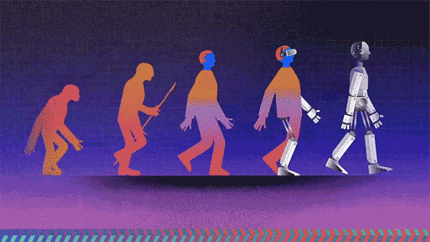
More muscle with the right glasses?

No pain, no gain? All well and good. If it's up to me, I'd like a little less pain and a little more gain. A research group gives me hope: they put VR goggles on their test subjects during training - and found amazing effects.
Welcome to the future. Muscles are still being toned in the fitness centres, the rutting cries of extroverted pumpers still cut through the testosterone-fuelled air. But AirPods and tank tops have been joined by another indispensable accessory: VR goggles sit atop the red-tinted heads. Why? Because it brings benefits during training.
A group of researchers led by Maria Matsangidou from the University of Kent has investigated the impact of training with VR glasses on body awareness. 80 participants took part, with an average age of 23. At the beginning, the maximum weight with which they could perform a 180° bicep curl while standing against the wall was determined. With 20 per cent of this personal maximum weight, they then went on to do the actual exercise on another day.
The test subjects without VR glasses saw:
A chair at a table cushioned by a yoga mat. They were asked to support their elbow in front of them and hold the dumbbell with the appropriate weight for as long as possible. Keep your elbow at a 90° angle and your forearm at a 45° angle to the tabletop.
The test subjects with VR glasses saw:
A chair at a table upholstered with a yoga mat. An arm holding the dumbbell at the appropriate angle. In short: the same boring scene, only virtual instead of real. The weight in the hand and the associated effort was of course real for both groups. All test subjects were also sitting in the same room.
Arm not real. Table not real. Pain not real.
Now I would have thought that this couldn't make much difference. After all, the VR test subjects were not distracted by spectacular animations, nor did they see any Schwarzenegger biceps in front of them to inspire their belief in their own strength. Real or virtual monotony - so what? But our brain seems to be saying to itself: Arm not real. Table not real. Pain not real.
The cyborgs were superior:
- The VR test subjects lasted almost two minutes longer on average.
- They had an average pulse rate that was three beats slower
- They rated pain and exertion as significantly lower.

Wow. Can our brains really be tricked so easily? Do we stop feeling blood, sweat and tears as soon as the world looks virtual? Not even when at least the effort and sweat are real? Even the more (pain) sensitive people among the test subjects were told, to put it bluntly: glasses on, pain off.
VR the champions?
Maybe the efficient workout of tomorrow will be half real, half virtual. In any case, the results of the experiment are impressive - almost two minutes more until the VR candidates are exhausted is quite a lot. And it's not the only study to suggest that our perception of pain can be tricked quite easily. Even if virtual gym reality is still a dream of the future, we have everything we need to try it out for ourselves. VR glasses are available at digitec and weights are far more than you can carry. For the time being, fitness normals like me aren't staring at animated arms. We continue to marvel at ourselves in love with ourselves in the real mirror. Quite real. At most a little through rose-coloured glasses.


Simple writer and dad of two who likes to be on the move, wading through everyday family life. Juggling several balls, I'll occasionally drop one. It could be a ball, or a remark. Or both.
From the latest iPhone to the return of 80s fashion. The editorial team will help you make sense of it all.
Show all